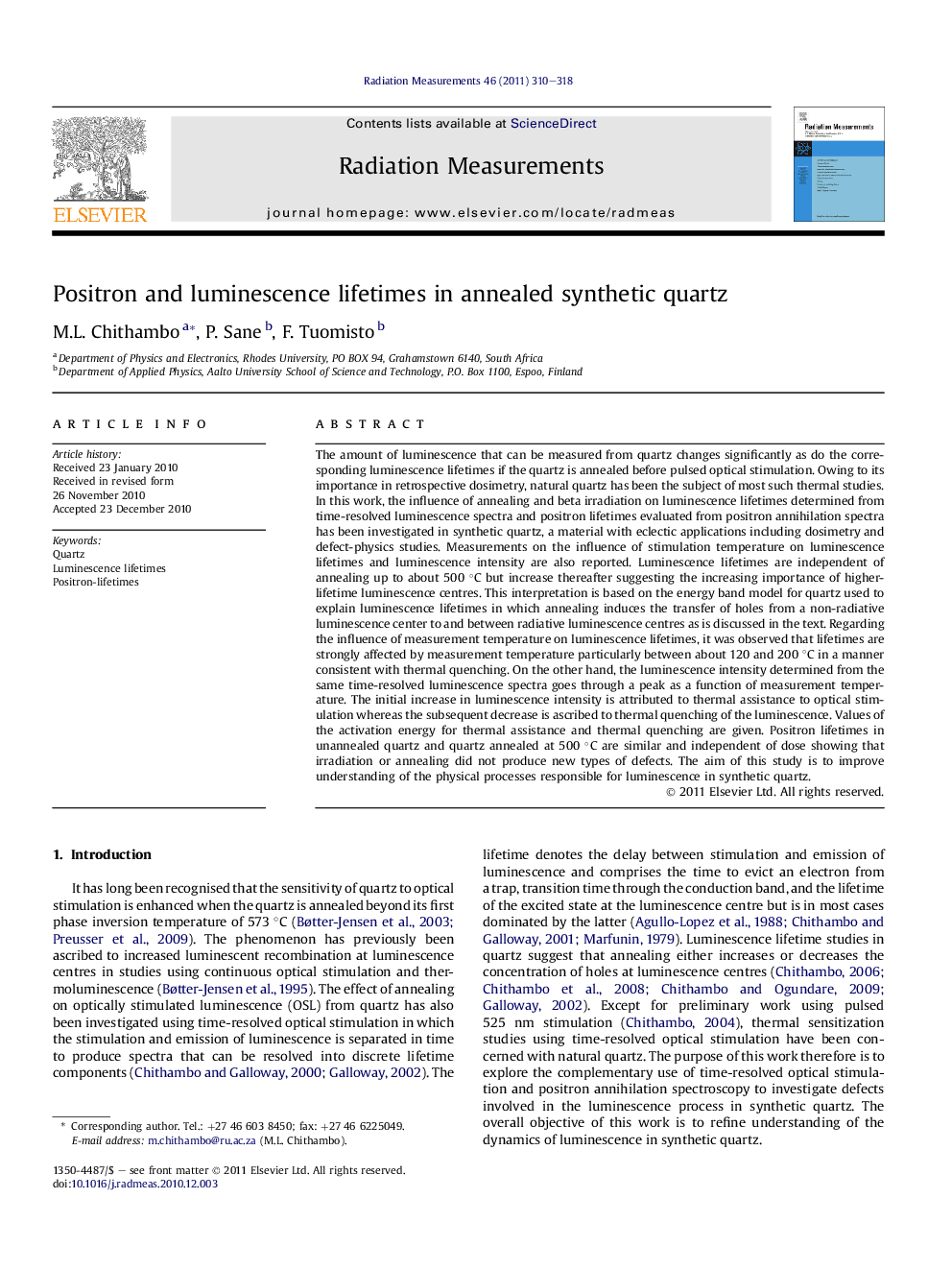| Article ID | Journal | Published Year | Pages | File Type |
|---|---|---|---|---|
| 1885215 | Radiation Measurements | 2011 | 9 Pages |
The amount of luminescence that can be measured from quartz changes significantly as do the corresponding luminescence lifetimes if the quartz is annealed before pulsed optical stimulation. Owing to its importance in retrospective dosimetry, natural quartz has been the subject of most such thermal studies. In this work, the influence of annealing and beta irradiation on luminescence lifetimes determined from time-resolved luminescence spectra and positron lifetimes evaluated from positron annihilation spectra has been investigated in synthetic quartz, a material with eclectic applications including dosimetry and defect-physics studies. Measurements on the influence of stimulation temperature on luminescence lifetimes and luminescence intensity are also reported. Luminescence lifetimes are independent of annealing up to about 500 °C but increase thereafter suggesting the increasing importance of higher-lifetime luminescence centres. This interpretation is based on the energy band model for quartz used to explain luminescence lifetimes in which annealing induces the transfer of holes from a non-radiative luminescence center to and between radiative luminescence centres as is discussed in the text. Regarding the influence of measurement temperature on luminescence lifetimes, it was observed that lifetimes are strongly affected by measurement temperature particularly between about 120 and 200 °C in a manner consistent with thermal quenching. On the other hand, the luminescence intensity determined from the same time-resolved luminescence spectra goes through a peak as a function of measurement temperature. The initial increase in luminescence intensity is attributed to thermal assistance to optical stimulation whereas the subsequent decrease is ascribed to thermal quenching of the luminescence. Values of the activation energy for thermal assistance and thermal quenching are given. Positron lifetimes in unannealed quartz and quartz annealed at 500 °C are similar and independent of dose showing that irradiation or annealing did not produce new types of defects. The aim of this study is to improve understanding of the physical processes responsible for luminescence in synthetic quartz.
